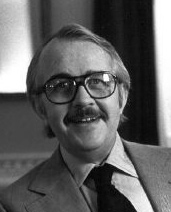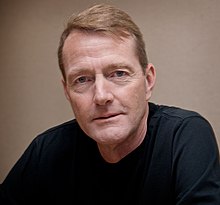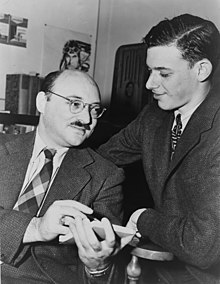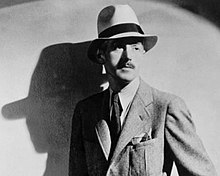P.I. Fiction
As author of my own P.I. detective series The Tony Lowell Mysteries, and having now covered the origins of this genre in the real world, the time has come (the walrus said) to talk of many things: of shoes and ships and sealing wax, of cabbages and kings--oops, that's not the real world, sorry Alice, never mind, but you get the idea.
 Beginning in 1930, Hammett, perhaps living up to his dashing name, was welcomed into the company of New York's finest (writers, not cops). There he met playwright and screenwriter Lillian Hellman, with whom he embarked on a thirty-year romance that ended with his death in 1961, during which both were blacklisted by HUAC.
Beginning in 1930, Hammett, perhaps living up to his dashing name, was welcomed into the company of New York's finest (writers, not cops). There he met playwright and screenwriter Lillian Hellman, with whom he embarked on a thirty-year romance that ended with his death in 1961, during which both were blacklisted by HUAC.
Another female writer came along in 1930, under the collective pseudonym Carolyn Keene (multiple writers), this time targeting the YA (Young Adult) market, with the now beloved Nancy Drew series.
This series was developed as a counterpart to the equally popular Hardy Boys (which I myself grew up with), also written by a collective under the pseudonym Franklin W. Dixon, first published in 1927.
In 1934 readers were gifted with the brilliant armchair detective, Nero Wolfe, by Rex Stout.
Raymond Chandler gifted the readers of a nation in urgent need of escape with his L.A.-based P.I. Phillip Marlowe, who first hit the streets in 1939 with The Big Sleep. With this book Chandler created the American P.I. prototype--indeed a strong, silent (if not sullen) chronic loner.
In 1949, Ross Macdonald (no relation to my own inspirational mentor John D. MacDonald, see below) published The Moving Target--the first of his nearly 20 hard-boiled detective novels featuring P.I. Lew Archer.


.
MacDonald's first of the McGee series was The Deep Blue Good-by, published in 1964. MacDonald went on to publish 20 more of this series, all with a color in the title. He was one of the first to use a title them (like Sue Grafton's alphabet series, Janet Evanovich's 'number' books with Stephanie Plum as her P.I. Not yet in their sales category, but my Tony Lowell Mysteries all had a noun followed by 'of the' and a metaphoric clincher (e.g. Eye of the Gator).
In later years, John D. MacDonald went on to receive numerous well-deserved accolades, such as Grand Master from the Mystery Writers of America.
Ernest Tidyman's Shaft, first published in 1971, became another original: a black P.I. This was produced as a feature film just last year, with Samuel L. Jackson in the principal role with considerable success. (Richard Roundtree played another role in that film): Shaft (2019 film).


From Wikipedia:
Robert B. Parker brought us his man, Spenser, in 1973 with The Godwulf Manuscript[22] .
From Wikipedia:

From Wikipedia:
Born in Independence, Louisiana, he was adopted and raised as an only child.[2] He attended Louisiana State University and studied mechanical engineering.[2]
Lee Child: the pen name of English writer James Dover Grant, his principal character is Jack Reacher, a kind of carefree deadbeat wanderer (mostly across the U.S.), who cares when it suits him. Not exactly a P.I. in the traditional sense, but he is very private, and casts a sharp eye when and where needed (even if unwanted). His first book, Killing Floor was published in 1997, with roughly a book a year since then.
.
I will end this blog here. I'm sure I've left out one of your favorites (hopefully not all) but wish to call it a day. This blog is lengthy enough as it is. And my apologies for any errors. Please post a comment to point it/them out, and thank you for reading.
E.C. Ayres

P.I. novels have few requirements: the first is a believable premise (see my blog on this), with a strong protagonist (not necessarily physically, that's a cliche--the strong, silent type etc.).
The first series of novels (actually often short stories) was Arthur Conan Doyle's beloved Sherlock Holmes series--at the time the most popular literary works of all time, apart from The Bible. These were published starting in the late 1880's, off and on for the next two decades.

Doyle even brought Holmes back from the dead with The Hound of the Baskervilles, after killing Holmes and his nemesis Moriarty (with a fall into the Reichenbach Falls in Switzerland, during hand-to-hand combat) in The Final Problem in 1889, in order to focus on historical novels. The public outcry (beginning with Doyle's own mother's 'how could you?' letter) he therefore relented. Eventually. He didn't actually publish Baskervilles until 1903--fifteen years after Holmes apparently mistaken demise. I will not disclose how Doyle accomplished this. No spoilers, please--it's worth a re-read.
Who hasn't read and loved Agatha Christie? Starting in 1920, her Hercule Poirot is unique among private investigators, being from Belgium, of all places. (This was slightly pre-E.U.). And she holds a record that it is highly unlikely will ever be broken (the publishing world is much too scattered, like global bird shot. If not shit). According to The Guiness Book of Records her books have sold over two billion copes, worldwide: the most sold other than The Bible and the works of Shakespeare.

(Note: today, of course, anyone can claim to be an author. All they have to do is write a book (God forbid anyone should bother to edit or proofread). And voila! It's published! (Well, almost, but self-publishing formats are huge and world-wide today, topped, of course, by Amazon. But yes, you will have to pay a fee. No advances in the self-publishing world (or the other publishing world, for that matter, other then the benighted top ten or so authors, such as James Patterson (who currently heads that list).
In 1929 Ellery Queen made the scene (he was a pseudonym for two English writers--Frederic Dannay and Manfred Bennington Lee.

Like myself, these two cousins' careers began by winning a writing contest for Best First Mystery Novel. (In their case from McClure's Magazine, in mine St. Martin's Press and the P.I. Writers of America). They, of course, sold several more books than I (OK, fine, several million more).
My favorite thing about Ellery Queen the character, was that he, himself, is an author! I love that.
Rex Stout was another American author who emerged in the 1930's. Nero Wolfe, Stout's investigator doesn't actually do any investigating. He prefers to remain comfortable in his luxury townhouse in New York City, in which he seldom emerges from his comfortable armchair (a tad stout, we might mention), and from which he seldom emerges if ever. His energetic young assistant Artchie Goodwin (always in strict confidence) does the actual leg work. Between assignments (he is very choosy) or while awaiting Goodwin to come up with clues for him to scrutinize and interpret, he also tends orchids in his roof garden, or reading books in his, well, armchair. Where he is served gourmet meals by his personal chef, Fritz Brenner.
Stout went on to publishing 33 novels, most set in NYC, and his Rex Stout series was nominated for Best Mystery Series of the Century (20th) as well as for Best Mystery Writer at the world's biggest mystery convention: Bouchercon 2000 (named for NY Times columnist/reviewer and mystery reader par excellence, Anthony Boucher).

Doyle even brought Holmes back from the dead with The Hound of the Baskervilles, after killing Holmes and his nemesis Moriarty (with a fall into the Reichenbach Falls in Switzerland, during hand-to-hand combat) in The Final Problem in 1889, in order to focus on historical novels. The public outcry (beginning with Doyle's own mother's 'how could you?' letter) he therefore relented. Eventually. He didn't actually publish Baskervilles until 1903--fifteen years after Holmes apparently mistaken demise. I will not disclose how Doyle accomplished this. No spoilers, please--it's worth a re-read.
Who hasn't read and loved Agatha Christie? Starting in 1920, her Hercule Poirot is unique among private investigators, being from Belgium, of all places. (This was slightly pre-E.U.). And she holds a record that it is highly unlikely will ever be broken (the publishing world is much too scattered, like global bird shot. If not shit). According to The Guiness Book of Records her books have sold over two billion copes, worldwide: the most sold other than The Bible and the works of Shakespeare.

(Note: today, of course, anyone can claim to be an author. All they have to do is write a book (God forbid anyone should bother to edit or proofread). And voila! It's published! (Well, almost, but self-publishing formats are huge and world-wide today, topped, of course, by Amazon. But yes, you will have to pay a fee. No advances in the self-publishing world (or the other publishing world, for that matter, other then the benighted top ten or so authors, such as James Patterson (who currently heads that list).
In 1929 Ellery Queen made the scene (he was a pseudonym for two English writers--Frederic Dannay and Manfred Bennington Lee.

Like myself, these two cousins' careers began by winning a writing contest for Best First Mystery Novel. (In their case from McClure's Magazine, in mine St. Martin's Press and the P.I. Writers of America). They, of course, sold several more books than I (OK, fine, several million more).
My favorite thing about Ellery Queen the character, was that he, himself, is an author! I love that.
Rex Stout was another American author who emerged in the 1930's. Nero Wolfe, Stout's investigator doesn't actually do any investigating. He prefers to remain comfortable in his luxury townhouse in New York City, in which he seldom emerges from his comfortable armchair (a tad stout, we might mention), and from which he seldom emerges if ever. His energetic young assistant Artchie Goodwin (always in strict confidence) does the actual leg work. Between assignments (he is very choosy) or while awaiting Goodwin to come up with clues for him to scrutinize and interpret, he also tends orchids in his roof garden, or reading books in his, well, armchair. Where he is served gourmet meals by his personal chef, Fritz Brenner.
Stout went on to publishing 33 novels, most set in NYC, and his Rex Stout series was nominated for Best Mystery Series of the Century (20th) as well as for Best Mystery Writer at the world's biggest mystery convention: Bouchercon 2000 (named for NY Times columnist/reviewer and mystery reader par excellence, Anthony Boucher).
Dashiell Hammett is widely considered to be one of the finest mystery writers of all time, of whom, in his obituary in 1961, The New York Times wrote of him that he was 'the dean of the hard-boiled school of detective fiction' with his P.I. Sam Spade (Don't you just love these names?). In 1929 his first P.I. (intriguingly named 'The Continental Op,' more a job title than a name) was published: The Maltese Falcon. Hammond's consensus successor, Raymond Chandler, wrote of him:
Hammett was the ace performer... He is said to have lacked heart; yet the story he himself thought the most of, The Glass Key, is the record of a man's devotion to a friend. He was spare, frugal, hard-boiled, but he did over and over again what only the best writers can ever do at all. He wrote scenes that seemed never to have been written before.
 Beginning in 1930, Hammett, perhaps living up to his dashing name, was welcomed into the company of New York's finest (writers, not cops). There he met playwright and screenwriter Lillian Hellman, with whom he embarked on a thirty-year romance that ended with his death in 1961, during which both were blacklisted by HUAC.
Beginning in 1930, Hammett, perhaps living up to his dashing name, was welcomed into the company of New York's finest (writers, not cops). There he met playwright and screenwriter Lillian Hellman, with whom he embarked on a thirty-year romance that ended with his death in 1961, during which both were blacklisted by HUAC.Another female writer came along in 1930, under the collective pseudonym Carolyn Keene (multiple writers), this time targeting the YA (Young Adult) market, with the now beloved Nancy Drew series.
This series was developed as a counterpart to the equally popular Hardy Boys (which I myself grew up with), also written by a collective under the pseudonym Franklin W. Dixon, first published in 1927.
In 1934 readers were gifted with the brilliant armchair detective, Nero Wolfe, by Rex Stout.
Raymond Chandler gifted the readers of a nation in urgent need of escape with his L.A.-based P.I. Phillip Marlowe, who first hit the streets in 1939 with The Big Sleep. With this book Chandler created the American P.I. prototype--indeed a strong, silent (if not sullen) chronic loner.
In 1949, Ross Macdonald (no relation to my own inspirational mentor John D. MacDonald, see below) published The Moving Target--the first of his nearly 20 hard-boiled detective novels featuring P.I. Lew Archer.
Mickey Spillane's personal life reads like a novel or film script: raised in New Jersey (like this author) his father was an Irish-immigrant bartender, his mother Scottish. He worked summers as a lifeguard (ditto!) and even as a trampoline acrobat with the world-famous Ringling Bros. and Barnum & Bailey Circus. Then a fighter pilot and flight instructor with the Army Air Corps.
After the war, Spillane got his first writing job: writing comic books. (Yours truly wrote animated cartoon shows for Hanna Barbera including Scooby Doo--my first detective show!). But of course Spillane had higher ambitions. Like myself, he wanted to become a mystery writer. So he wrote his first book, I, the Jury, in 19 days. That's got to be some kind of record. I, the Jury would definitely set records. Published in 1947, it went on to sell 6.5 million copies of Dutton hardcovers and Signet paperbacks in the USA alone. Mike Hammer was taking the Lew Archer prototype up a notch: more explicit sex and violence, which outraged much of the literary establishment. But sell books, it did. In spades. Come-hither covers featuring scantily-clad women didn't hurt.
In the '60's Spillane befriended Ayn Rand, and they became mutual fans.

Spillane's Mike Hammer became a huge television success in the 1980's starring Stacy Keach.
Per above, my inspiration to become a mystery writer with a private investigator was John D. MacDonald and his Travis McGee character. The guy lived on a houseboat, for Chrissake! How cool is that? And he was a 'salvage consultant.' Which always amounted to doing the very same things a P.I. would do. Out of a place called Bahia del Mar in Ft. Lauderdale, Florida. He also had an intriguing sidekick, his friend Meyer, who is well-respected and well-known economist, with a PhD. Meyer lives in a cabin cruiser nearby.
.
MacDonald's first of the McGee series was The Deep Blue Good-by, published in 1964. MacDonald went on to publish 20 more of this series, all with a color in the title. He was one of the first to use a title them (like Sue Grafton's alphabet series, Janet Evanovich's 'number' books with Stephanie Plum as her P.I. Not yet in their sales category, but my Tony Lowell Mysteries all had a noun followed by 'of the' and a metaphoric clincher (e.g. Eye of the Gator).
In later years, John D. MacDonald went on to receive numerous well-deserved accolades, such as Grand Master from the Mystery Writers of America.
Ernest Tidyman's Shaft, first published in 1971, became another original: a black P.I. This was produced as a feature film just last year, with Samuel L. Jackson in the principal role with considerable success. (Richard Roundtree played another role in that film): Shaft (2019 film).


From Wikipedia:
Ernest Ralph Tidyman (January 1, 1928 – July 14, 1984) was an American author and screenwriter, best known for his novels featuring the African-American detective John Shaft. He also co-wrote the screenplay for the film version of Shaft with John D.F. Black in 1971.[1]
His screenplay for The French Connection garnered him an Academy Award for Best Adapted Screenplay, as well as a Golden Globe Award, a Writers Guild of America Award, and an Edgar Award.[2]
Robert B. Parker brought us his man, Spenser, in 1973 with The Godwulf Manuscript[22] .
From Wikipedia:
Robert Brown Parker (September 17, 1932 – January 18, 2010) was an American writer of fiction, primarily of the mystery/detective genre. His most famous works were the 40 novels written about the fictional private detective Spenser. ABC television network developed the television series Spenser: For Hire based on the character in the mid-1980s; a series of TV movies based on the character was also produced. His works incorporate encyclopedic knowledge of the Boston metropolitan area.[2] The Spenser novels have been cited by critics and bestselling authors such as Robert Crais, Harlan Coben, and Dennis Lehane[3] as not only influencing their own work but reviving and changing the detective genre.[4]
Parker also wrote two other series based on an individual character: He wrote nine novels based on the fictional character Jesse Stone, a Los Angeles police officer who moves to a small New England town, and six novels based on the fictional character Sunny Randall, a female private investigator. Parker wrote four Westerns starring the duo Virgil Cole and Everett Hitch. The first, Appaloosa, was made into a film starring Ed Harris.

Sue Grafton was another of the first women to find a place among the mystery elite, with her opening act: A is for Alibi, in 1980. Sadly she never quite made it to 'Z.' With Y is for Yesterday (2017) she came close, before passing following a two-year battle with cancer.
Her character was private investigator Kinsey Millhone in the fictional city of Santa Teresa, California. The daughter of detective novelist C. W. Grafton, she said the strongest influence on her crime novels was author Ross Macdonald. Before her success with this series, she wrote screenplays for television movies.*

Another successful female author from the '80's would be Sara Paretsky whose protagonist, V. I. Warshawski, works out of Chicago.

From Wikipedia:
Life and career[edit]
Also in the '80's, Robert Crais introduced us to his P.I. Elvis Cole, in The Monkey's Raincoat, in 1987.
Her character was private investigator Kinsey Millhone in the fictional city of Santa Teresa, California. The daughter of detective novelist C. W. Grafton, she said the strongest influence on her crime novels was author Ross Macdonald. Before her success with this series, she wrote screenplays for television movies.*

Another successful female author from the '80's would be Sara Paretsky whose protagonist, V. I. Warshawski, works out of Chicago.

From Wikipedia:
Life and career[edit]
Paretsky was born in Ames, Iowa. Her father was a microbiologist and moved the family to Kansas in 1951 after taking a job at the University of Kansas, where Paretsky eventually graduated. The family rented an old farm house. Her relationship with her parents was strained; her mother was an alcoholic and her father was a harsh disciplinarian.[3]
After obtaining a bachelor's degree in political science from the University of Kansas, she did community service work on the south side of Chicago in 1966 and returned in 1968 to work there. She ultimately completed a Ph.D. in history at the University of Chicago; her dissertation was entitled "The Breakdown of Moral Philosophy in New England Before the Civil War". She also earned an MBA from the University of Chicago Graduate School of Business.
Her husband, Courtenay Wright, was a professor of physics at the University of Chicago; the two were together from 1970 until his death in 2018.[4]
Paretsky is an alumna of the Ragdale Foundation.[5] She was to appear in an amateur light opera production in 2011.[1]
The protagonist of all but two of Paretsky's novels is the female private investigator V.I. Warshawski and the author is credited with transforming the role and image of women in the crime novel.[6] The Winter 2007 issue of Clues: A Journal of Detection is devoted to her work.[7] She is also considered the founding mother of Sisters in Crime, an organization that supports and promotes women in the mystery field.[8]
Paretsky's first Warshawsky novel was Indemnity Only (1982) Also in the '80's, Robert Crais introduced us to his P.I. Elvis Cole, in The Monkey's Raincoat, in 1987.
From Wikipedia:
Born in Independence, Louisiana, he was adopted and raised as an only child.[2] He attended Louisiana State University and studied mechanical engineering.[2]
Crais moved to Hollywood in 1976 where he found work as a screenwriter for the television series Hill Street Blues, Cagney & Lacey and Miami Vice, and was nominated for an Emmy award.[3] Following the death of his father in 1985, Crais published the novel, The Monkey's Raincoat, which won the 1988 Anthony Award for "Best Paperback Original" and[4] the 1988 Mystery Readers International Macavity Award for "Best First Novel".[5] It has since been selected as one of the 100 Favorite Mysteries of the Century by the Independent Mystery Booksellers Association.
In 2006 Crais was awarded the Ross Macdonald Literary Award[6] and in 2010 the Private Eye Writers of America's (PWA) Lifetime Achievement Award The Eye.[7] In 2014 Crais received the Mystery Writers of America's (MWA) Grand Master Award.[8]
Crais novels include: Demolition Angel, Hostage, Suspect, and The Two-Minute Rule. Most of Crais' books feature the characters Elvis Cole and Joe Pike, with The Watchman (2007), The First Rule (2010) and The Sentry (2011) centering on Joe Pike. Taken is a 2012 detective novel by Robert Crais. It is the fifteenth in a series of linked novels centering on the character Elvis Cole. The 2005 film, Hostage, was an adaptation of one of his books.[9
More recently, an author by the name of Robert Galbraith (also known as J.K. Rowling in some circles) presented a somewhat down-and-out P.I. (or is that a given, not counting named Cormoran Strike (son of a wayward rock star) who hires an eager young female assistant to get back on his proverbial feet, in 2013 and The Cuckoo's Calling. This and three sequels were made into a TV series by BBC.called Strike, appropriately enough (2017).. I read the books and saw the series and all are absolutely up to Rowling's high standards and highly successful (although some questions were raised as to whether leaked disclosure of the author's true identity, which Rowling did not want known, preferring the books be judged on their own merits, and the reviews were stellar, although it's hard to know what was actually known and when (some wags predicted it would be out in 'four seconds'). Be that as it may, Cuckoo was well-received and given accolades from reviewers and readers alike.


J.K. Rowling's personal life is like another fairy tale. She was born in Gloucestershire, England, in a town called Yale (source name of a certain American university of mixed repute).
From Wikipedia:
Born in Yate, Gloucestershire, Rowling was working as a researcher and bilingual secretary for Amnesty International when she conceived the idea for the Harry Potter series while on a delayed train from Manchester to London in 1990.[7] The seven-year period that followed saw the death of her mother, birth of her first child, divorce from her first husband, and relative poverty until the first novel in the series, Harry Potter and the Philosopher's Stone, was published in 1997. There were six sequels, of which the last, Harry Potter and the Deathly Hallows, was released in 2007. Since then, Rowling has written five books for adult readers: The Casual Vacancy (2012) and—under the pseudonym Robert Galbraith—the crime fiction Cormoran Strike series, which consists of The Cuckoo's Calling (2013), The Silkworm (2014), Career of Evil (2015), and Lethal White (2018).[8]
Rowling has lived a "rags to riches" life in which she progressed from living on benefits to being the world's first billionaire author.[9] She lost her billionaire status after giving away much of her earnings to charity but remains one of the wealthiest people in the world.[10] She is the UK's best-selling living author, with sales in excess of £238 million.[11] The 2016 Sunday Times Rich List estimated Rowling's fortune at £600 million, ranking her as the joint 197th richest person in the UK.[12] Time named her a runner-up for its 2007 Person of the Year, noting the social, moral, and political inspiration she has given her fans.[13] In October 2010, Rowling was named the "Most Influential Woman in Britain" by leading magazine editors.[14] She has supported multiple charities, including Comic Relief, One Parent Families, and Multiple Sclerosis Society of Great Britain, as well as launching her own charity, Lumos.
So clearly, Rowling has handled the post-Potter riches portion of her life and career with aplomb. And generosity, unlike certain people in my own neighborhood (well, Seattle). Her sales have exceeded 230 million British Pounds (sorry, don't have that symbol on my keyboard).
And, last but not least:
Lee Child: the pen name of English writer James Dover Grant, his principal character is Jack Reacher, a kind of carefree deadbeat wanderer (mostly across the U.S.), who cares when it suits him. Not exactly a P.I. in the traditional sense, but he is very private, and casts a sharp eye when and where needed (even if unwanted). His first book, Killing Floor was published in 1997, with roughly a book a year since then.
.

I will end this blog here. I'm sure I've left out one of your favorites (hopefully not all) but wish to call it a day. This blog is lengthy enough as it is. And my apologies for any errors. Please post a comment to point it/them out, and thank you for reading.
E.C. Ayres






Comments
Post a Comment